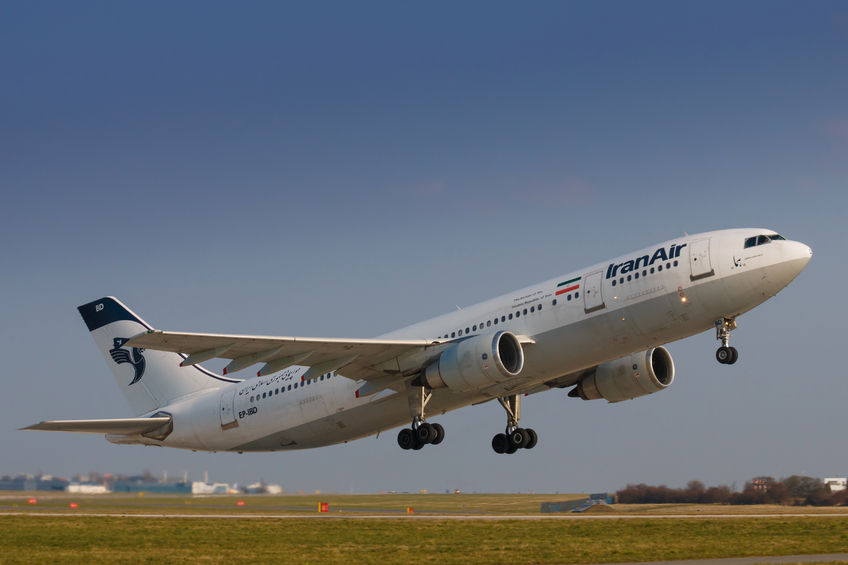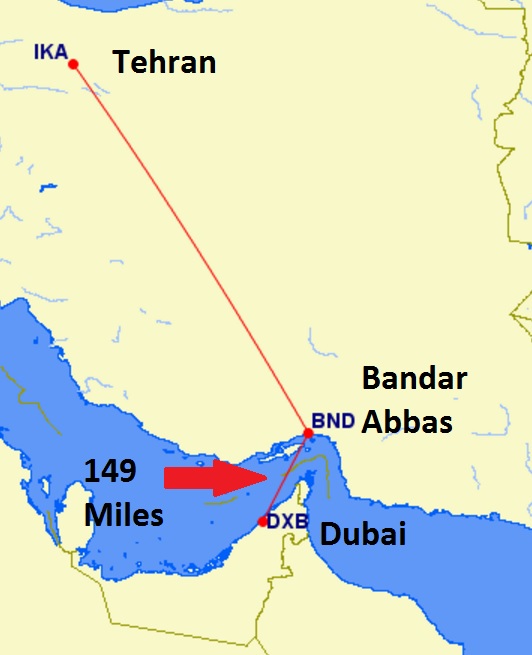With a heightening of tensions between the U.S. and Iran it seems important to bring a little bit of history – aviation history between the two countries – back into focus. As we consider whether recent events might lead to further tit-for-tat escalation or misinterpretation by either side – neither one of which wants outright war – it’s impossible to overstate the significance of Iran Air 655 in shaping how Iran perceives the U.S.
Three years ago I wrote about how the U.S. shooting down an Iranian civilian jetliner plays a similar role in Iran’s consciousness that Iran taking hostages after the 1979 Islamic Revolution plays in the U.S. narrative.
The 1979 revolution overthrew the Shah, whose power had been consolidated with the help of the CIA (after the overthrow of Prime Minister Mossadegh). The US backed Iraq in the 8 year Iran-Iraq war, though in hindsight this didn’t go well, shortly after it ended Iraq under Saddam Hussein invaded Kuwait – which had provided billions for his anti-Iran crusade.
Iran came to the table for peace, helping to end the war in a stalemate, shortly after the US shot down a civilian Iran Air flight in 1988. They may have believed that the US was openly joining Iraq’s fight and would stop at nothing.
The horrible incident brought Tehran closer to ending the war, but its effects have lingered much longer than that. “The shoot-down of Iran Air flight 655 was an accident, but that is not how it was seen in Tehran,” former CIA analyst and current Brookings scholar Kenneth Pollack wrote in his 2004 history of U.S.-Iran enmity, “The Persian Puzzle.” “The Iranian government assumed that the attack had been purposeful. … Tehran convinced itself that Washington was trying to signal that the United States had decided to openly enter the war on Iraq’s side.”
That belief, along with Iraq’s increased use of chemical weapons against Iran, led Tehran to accept a United Nations cease-fire two months later. But it also helped cement a view in Iran, still common among hard-liners in the government, that the United States is absolutely committed to the destruction of the Islamic Republic and will stop at almost nothing to accomplish this. It is, as Time’s Michael Crowley points out in an important piece, one of several reasons that Iran has a hard time believing it can trust the United States to ever stop short of its complete destruction.
Iran still sees the US as its enemy, in part because we made a grave mistake similar to the Soviet downing of KAL 007 and arguably similar to the shooting down of Malaysia Airlines MH17 near the Russia-Ukraine border. As recently as a couple of years ago Iran Air still operated its daily Tehran – Dubai service once a week on Fridays as flight 655.
The US was involved in the Iran – Iraq war throughout parts of the 1980s. The US Navy exchanged fire with Iranian boats in late 1987 and a US ship struck an Iranian mine in April 1988. So the US was on alert for potential risks and had warned countries in the region via a NOTAM or Notice to Airmen that civilian aircraft had to monitor the international air distress frequency and be prepared to identify themselves to Navy ships to avoid being shot down.
Iran Air 655, an Airbus A300, flew from Tehran to Bandar Abbas on July 3, 1988. From there it operated a short flight to Dubai.

Iran Air A300 (Current Livery), Copyright: rebius / 123RF Stock Photo
The USS Vincennes pursued Iranian gunboats that had reportedly fired on one of its helicopters into Iranian waters in the Straits of Hormuz. They saw the Iran Air flight climbing on departure from Bandar Abbas. The airport was dual use — civilian flights but also F14 military aircraft (it’s a whole separate story how Iran came to operate US fighter jets). They feared they would come under attack from an F-14.
The US ship reportedly made 10 attempts to contact the Iranian aircraft, 7 on a military channel and 3 on a civilian channel. They received no response, fired missiles at the plane, and killed all 274 passengers and 16 crew on board.

The Vincennes lacked the capability to communicate on air traffic control frequencies. Its civilian communication would have been heard by the aircraft, but they hailed an unidentified aircraft at ‘350 knots’ or about 400 miles per hour which would have been the plane’s ground speed, a measure which differed significantly from the air speed (300 knots or about 350 miles per hour) the pilots would have seen.
It’s reasonable to believe the Iran Air pilots assumed a different plane was being hailed. They were flying in Iranian airspace above the proscribed altitude in the US NOTAM. The plane was climbing, not descending as though to attack.
While the US initially claimed its ship was in international waters, and that the ship’s captain acted reasonably given the information available and the short timeframe in which the situation developed, in 1996 the US agreed to pay Iran $132 million as a settlement though did not acknowledge wrongdoing.
Iran continues to see the US as an enemy and an untrustworthy negotiating partner in part because of the 1988 downing of Iran Air flight 655.
To them, the US is a country that would intentionally blow up a civilian flight to gain advantage against it. Moving into Iraq in 2003 was seen as a hostile act not just against Saddam Hussein but against Iran as well.
And Syria today is in large measure a proxy war, the fight with Bashar al-Assad is a fight between the US alongside Sunni Saudi Arabia and Turkey on the one hand and Shia Iran on the other. To the extent Iran still sees itself under threat, in part because of this incident so many years ago, we continue to butt heads with them in the region today.


[…] 1988 the U.S. accidentally shot down a civilian airliner, Iran Air 655. In 2020 Iran accidentally shot down Ukraine International Airlines flight PS752. […]